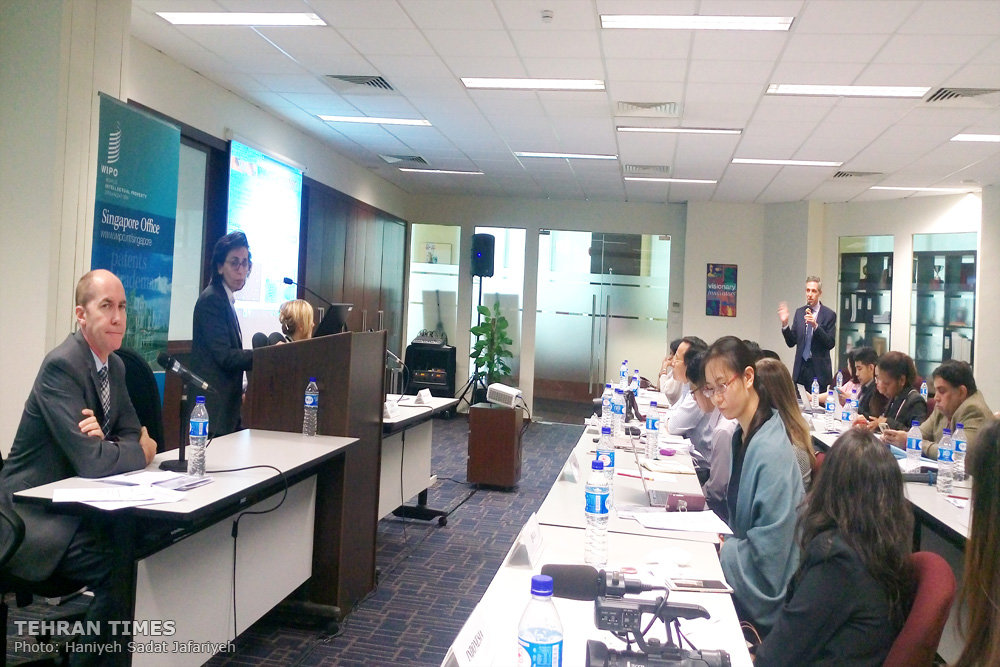WIPO encourages innovation, transparency

SINGAPORE - The World Intellectual Property Organization (WIPO), an agency of the United Nations (UN) that encourages individuals and businesses to innovate and create through a balanced international intellectual property (IP) system, held a two-day seminar under the title of “Intellectual Property is Big News: Regional Seminar for Journalists” on December 11 and 12 in its office in Singapore.
The seminar sought to brief media workers from Asian Pacific countries including Islamic Republic of Iran, Bangladesh, Bhutan, Cambodia, China, India, Indonesia, Lao PDR, Malaysia, Mongolia, Myanmar, Nepal, Pakistan, Papua New Guinea, Philippines, Singapore, South Korea, Sri Lanka, Thailand, and Vietnam with the notions of IP, IP rights and most importantly the role of WIPO in this regard.
According to seminar speakers, the value of knowledge-based and intangible assets and products in today’s world besides globalization of international trade has intensified the role of IP and it is now considered as the key point to development in a way that IP and innovation, as one of the most powerful forces for human progress, go hand in hand.
Today, the value of physical assets is being overtaken by intangible assets at a high pace and there are a lot of technological companies which are based on intangible assets across the globe. Companies innovate new products and expect to earn financial benefit from their creativity. Controlling dissemination and use of such assets is very difficult for their creators, though. “A huge number of questions arise out of this big transformation from physical capital to intellectual capital, which is the predominant source of wealth generation, and intellectual property's role,” WIPO Director General Francis Gurry told seminar participants during a video conference.
The worldwide IP system- which covers patents, copyright, trademarks, and industrial designs - protects inventors, businesses, designers and artists for their original ideas and effort. It encourages them to continue their route of creativity through giving creators certain rights in countries outside their home country. For example, the international patent system, known as the Patent Cooperation Treaty (PCT), empowers inventors to gain a temporary monopoly on their invention in return for disclosure of technical know-how. Supporting inventors, IP propels the wheels of human progress through the time and this guarantees benefit for humanity and plays a key role in promoting transparency to global business competition.
The global IP system is administered by WIPO, which is the international forum for IP-policy making and providing related services and information. The UN specialized agency works to make the international IP system efficient and accessible for inventors from all its 191 member states and balances the interests of producers and consumers.
As Senior Program Officer at the WIPO Office in Singapore Peter Willimott said when addressing the seminar participants, WIPO provides “a policy forum to shape balanced international IP rules for a changing world, global services to protect IP across borders and to resolve disputes, technical infrastructure to connect IP systems and share knowledge, cooperation and capacity-building programs to enable all countries to use IP for economic, social and cultural development, and a world reference source for IP information (global innovation trends).”
Governments and economic players are increasingly using intellectual assets in their commercial activities. “Patent applications around the world in 2016 increased by 8.3 percent while the number of registered trademarks grew 16.4 percent,” Gurry announced.
Companies from various Asian countries are keeping the pace up with Westerners in terms of applying IP to protect their innovation, brands, and industrial designs in their original countries as well as other countries across the globe, since IP is a territorial-based concept.
“Asia is now the dominant source of intellectual property applications in the world. There are a number of giants in Asia including China, Japan, and South Korea which are producers and users of intellectual property. There are also ASEAN countries and South Asia in particular India which are enormous sources or potential for intellectual property use and we see their growth is occurring. Asia presently accounts for 64 percent of patent applications, 60 percent of trademark applications, and 69 percent of design applications worldwide,” he added.
“The expansion of intellectual property sectors has far outpaced global economic growth,” Gurry expressed, suggesting that enterprises are using intellectual property more and more in their commercial positioning and activities, he noted.
However, the road to a balanced and efficient international IP system is bumpy for both WIPO and IP applicants across the world.
According to Willimott, the big challenge for member states and observers across the globe is to negotiate the changes and new rules needed to ensure that the international IP system keeps pace with the changing world, and continues to serve its fundamental purpose of encouraging innovation and creativity.
HJ/MA
